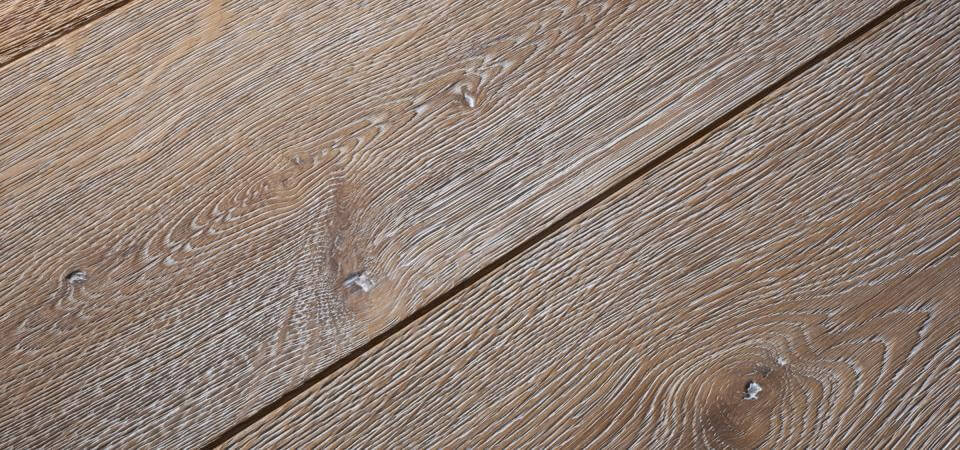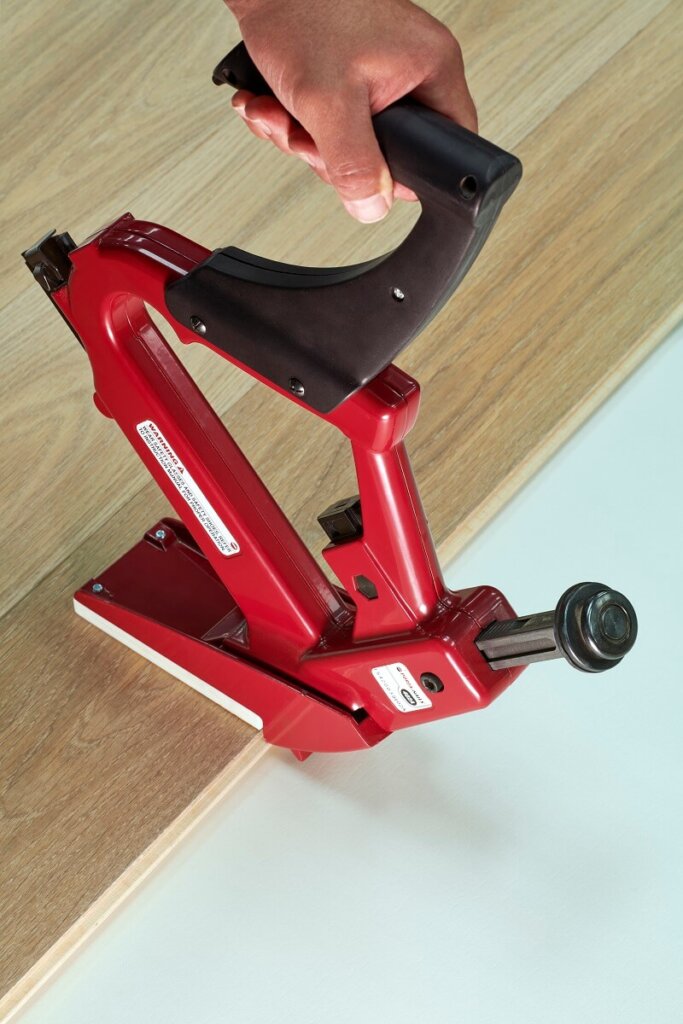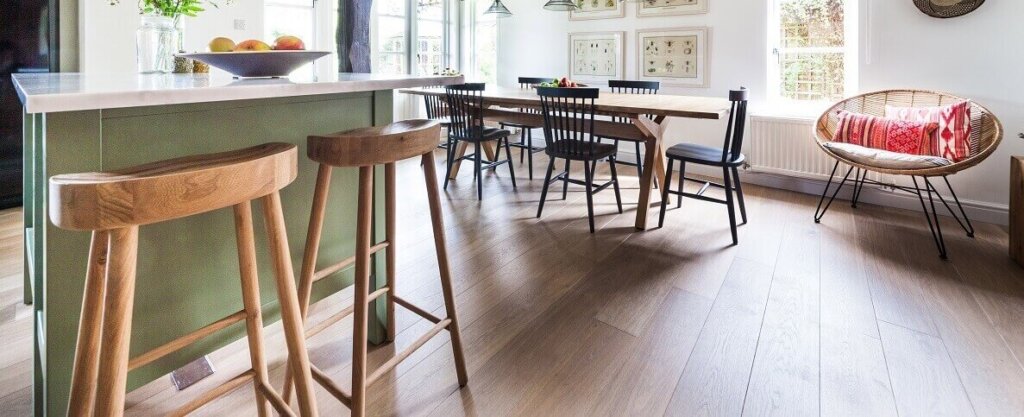Preparation
To ensure that you get the best out of your Russwood floor, it is important that it is installed correctly, starting with preparation.

Complete wet trades
Firstly, it is vitally important that the heating is on and the temperature is sitting at 18-20℃. The air humidity levels are approximately 40-65% relative humidity. Also, please ensure that all wet trades (i.e. plastering, painting and plumbing) are complete prior to introducing the floor to the room.
The above is very important; as wood is hygroscopic, it absorbs and releases moisture in line with the environment it is in. Consequently, if there is excess moisture in the air this will affect the boards and may cause problems as they will start to expand. Conversely, if the air is too hot/dry then the boards may contract (shrink) and gaps may start to appear.

Ensure that the concrete is dry
It is essential that the floor slab is completely dry before installation. This means that if it is a new floor, it must be given enough time to dry out. It also means that there are no on-going moisture sources that will allow the floor slab or screed to get wet.
To confirm that this is the case the base slab and screed must be tested to ensure that the whole sub-structure is completely dry. The easiest way to do this properly is to test the “water activity” of the base. This is done by measuring the relative humidity in insulated pockets above the base. A hygrometer unit is placed in an insulated chamber above the base and allowed to come to equilibrium (see diagram below). This takes about 72 hours. It is also important to measure the temperature, or else the results are not comparable.
This should be done at several locations around the slab/screed. A typical test arrangement is illustrated below.
The floor should not be laid if any of the tests show a reading of more than 65%RH.
There are various manufacturers of suitable equipment. “Protimeter” and “Tramex” instruments are commonly used. Digital data loggers are also a convenient way of conducting these tests and have the added advantage of taking multiple readings of both temperature and relative humidity, at regular intervals, continuously over the test period.
Electrical moisture meters (with prongs) provide a convenient way of taking a number of readings in a short time with minimal damage. However, care must be taken in the interpretation of the meaning of readings, and how the readings reflect moisture conditions within different building materials.
Electrical moisture meters are capable of providing a quantitative reading of moisture only on wood. Readings from any other surface such as a floor screed do not provide a true measure of % moisture content, and should only be regarded as an approximate guide.
(The floor slab over which the screed has been laid must incorporate a damp proof membrane, property detailed and made continuous with the wall damp proof course as described in BS8102).
Floor slabs and screeds were traditionally made from sand and cement mixes. However, in recent years, screeds made from calcium sulphate have become more common. These are commonly known as “anhydrite screeds” or perhaps “alpha-hemihydrate screeds”. Such screeds are normally laid on top of a concrete floor slab. The main difference from a practical perspective is that this type of non-cementitious screed requires about one third more water in the mix, and therefore can take longer to dry out.
A further complication is that during curing this type of screed often forms an impervious crust or film on the surface called “laitance”. This is a coating of fine particles on the surface that form naturally as the screed cures. Laitance can normally be removed by light abrasion a week or so after the screed is installed. If this is not removed, the screed will dry out more slowly than normal.
Once dry, the screed should be protected from spillage of liquids that may cause it to be re-wetted. Any water ingress to the screed can result in permanent damage.

Acclimatise flooring
It is important that the flooring is stored correctly after purchase and allowed to acclimatise before laying. In all cases we would recommend that the flooring is first unwrapped from ALL polythene and then lattice/criss-cross stacked in order to allow air flow (it is not necessary to separate every individual board).
Flooring should then be acclimatised in the room that it is being laid (or a room with the same room temperature and relative humidity) for 1-2 weeks for engineered oak flooring, or 2-3 for solid flooring, so that it can reach an equilibrium with its surroundings.
Regardless of the fitting method selected an expansion gap of at least 10-15 mm should be left all around the perimeter of the floor to allow for seasonal variations in temperature and different levels of heating. If the room is greater than 10 metres in length, please contact us for more details on internal expansion gaps.


Additional guidelines for fitting onto Underfloor Heating
All of our engineered boards are suitable for use with underfloor heating. If solid boards are being considered for use with underfloor heating, we recommend no wider than 150mm.
Special care must be taken at the preparation stage to ensure that the installation is successful. This care should include acclimatising the floor for one additional week whilst the underfloor heating is turned on. Please contact us to discuss further.
The heating should be turned off for two to three days before laying (if possible, maintain room temperature when the heating is off using another heat source). A period of 24 hours must be allowed prior to re-starting the heating.
For re-starting the heating after installation, it should be left at a low temperature (15°C) for the first week. The following week it may be adjusted according to your supplier’s recommendations. Note that the maximum floor surface temperature should not exceed 26°C and there should not be hot and cold areas within the same floor. Also, if rugs or loose carpets are used, the temperature underneath may exceed the recommended maximum.
When underfloor heating is used it is normal for the floor to be laid directly onto the surface of the screed. This allows better transmission of the heat into the room. There are special adhesives manufactured for this purpose. The adhesive must not act as a vapour barrier, its only function is to bond the wood to the screed. Tovcol MS Polymer is an example of a suitable adhesive. We recommend using Tover Nano-Fix Primer to prime the concrete prior to application of the adhesive.
We recommend monitoring the Relative Humidity in the room to avoid stress to the floor due to low relative humidity. Humidity gauges are readily available and low cost.


